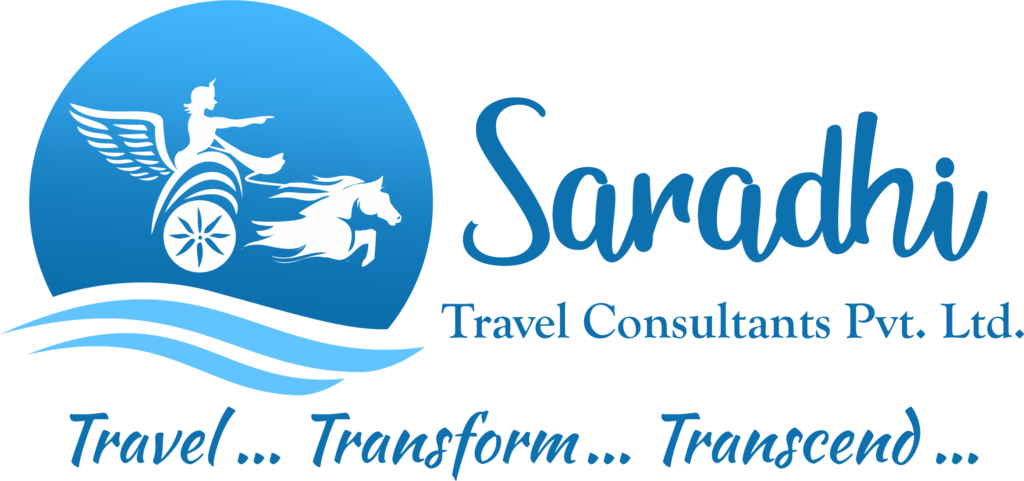Nepal - Muktinath - 1DD
- Tour code : 20706O
- Visiting : Kathmandu - Pokhara - Jomsom to Muktinath Temple - Kathmandu
- 7 Days / 6 Nights
- Cost per person (Click here to know)
- Flights
- Accommodation
- Local Transport
- Meals
- Flights
- Accommodation
- Local Transport
- Meals

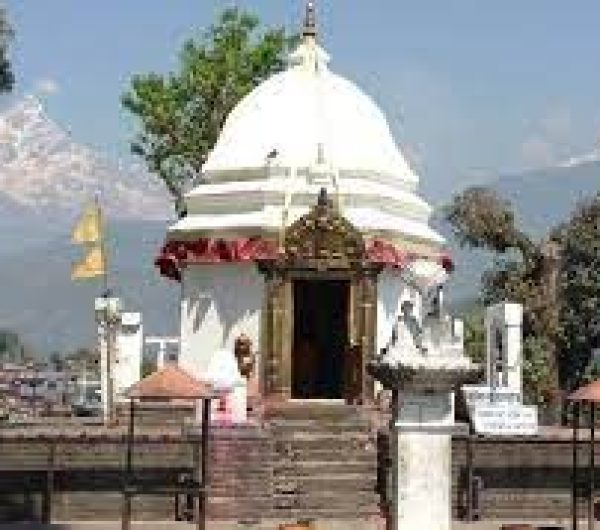
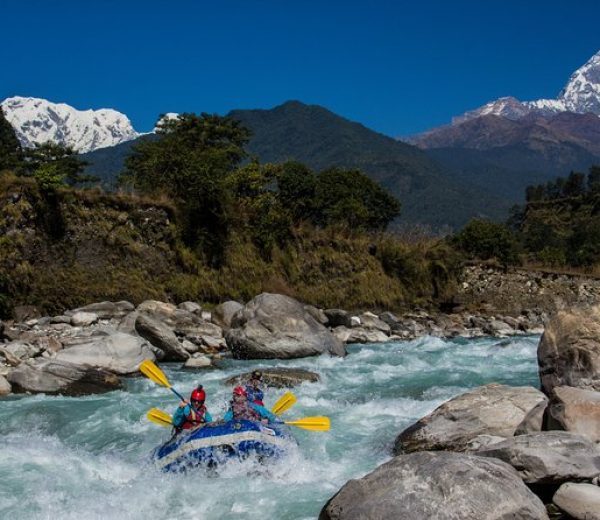
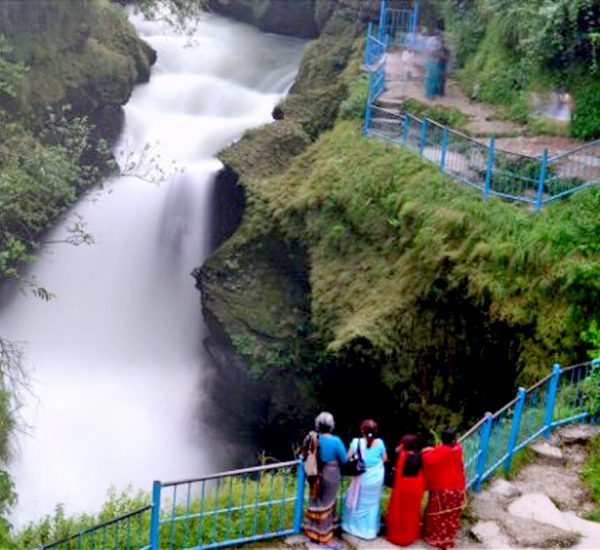
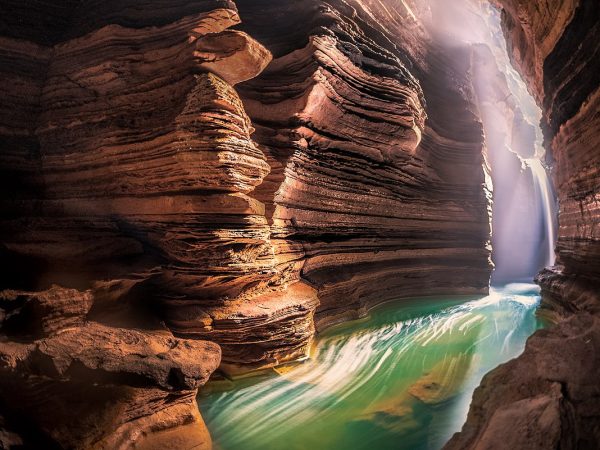
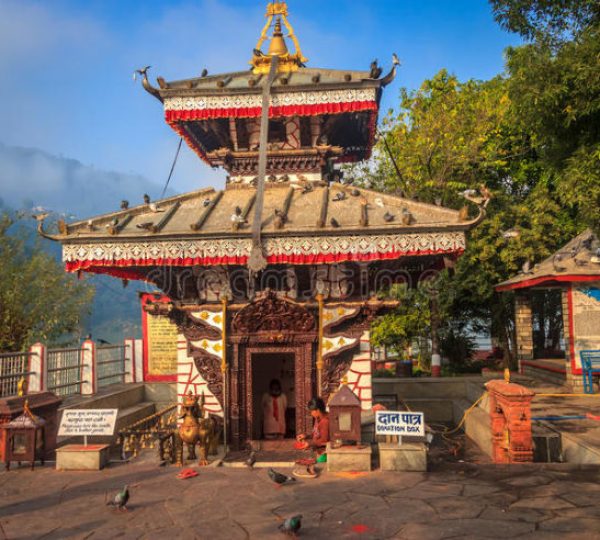

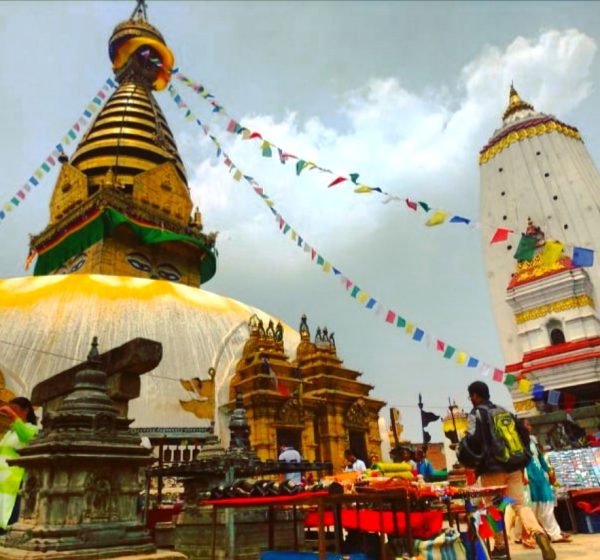
Muktinath Temple Tour: One of the famous Nepal's tour package among Hindus and Buddhist, Muktinath Tour is a very popular pilgrimage tour in Annapurna Conservation Area of Nepal. The Muktinath Temple is situated at an altitude of 13,000 feet above sea level in Mustang district and is also known among the Hindus as Mukti Chhetra, or the "abode of salvation". In this Muktinath Tour, you will be visited a small pagoda-style temple of Lord God Vishnu which is worshipped by both Hindus and Buddhists. The Buddhists worship the deity as one of the Bodhisattvas and Mukti Kshetra by Hindus. There are 108 sacred water spouts flowing with icy cold water where devotees take a quick bath. Nearby is the temple of Jwala Mai, or the Goddess of Flame, with the phenomenal underground blue flame.
The word "Muktinath" is obtained from two words "Mukti" and "Nath" which means "Salvation or Nirvana" and "God or Master" respectively. According to Hindu Myth, it is a belief that this world is "MAYA" (an illusion) of life cycle taking birth and rebirth on this earth. And to exit from this chain Hindu devotees visit this temple to take bath in 108 waterspouts (Mukti Dhara) and 2 holy ponds (Mukti Kunda) which is located in the backyard and front of the temple respectively.
In this Muktinath Tour trip, you will be driving from Kathmandu to Pokhara by Tourist Bus on the first day. Next day fly to Jomsom and drive to Ranipauwa (Jeep Station). Muktinath Temple is within half hour walking distance from here. People unable to walk can ride on the horse (extra payable). Take a holy bath under 108 water springs and two Kunda (holy ponds). Change clothes and worship Vishnu God Temple. After darshan and pooja visit another important Jwalamai Temple where water, fire, and sky meet together. Then, drive back to Jomsom and stay overnight here. The fourth day flies back to Pokhara and explores beautiful Pokhara city. Finishing the Muktinath Darshan trip drive back to Kathmandu. Visit the tourist attraction places in Kathmandu Valley and departure to the airport to fly back to your home. Our 7 days itinerary goes as follows.
Day 01: Kathmandu Arrival.
• You will be welcomed by our representative and transfer to hotel, 7 km.
• A brief introduction to the whole program.
• Overnight at Kathmandu.
Day 02: Drive from Kathmandu to Pokhara.
• 6:00 AM: Breakfast at hotel.
• 6:30 AM: Drop to Bus Station.
• 7:00 AM: Drive to Pokhara by tourist bus, 206 km - 7 hours.
• Arrival and transfer to hotel.
• Overnight at Pokhara.
Day 03: Fly from Pokhara to Jomsom & drive to Muktinath, Visit Temple & back to Jomsom.
• As per the flight schedule drop to airport.
• Fly to Jomsom, 15 mins.
• Arrival and hike for half hour to catch jeep.
• Drive to Muktinath by local sharing jeep.
• Arrival at Ranipauwa and hike for 15 mins flat and 15 mins ascending up to the temple.
• Perform pooja, worship and back to Jomsom following the same route.
• Overnight at Jomsom.
Day 04: Fly from Jomsom to Pokhara & Pokhara Sightseeing.
• As per the flight schedule fly back to Pokhara.
• Arrival and proceed for sightseeing.
• Visit Bindabasini Temple, Seti Gandaki River, Devis Fall, Gupteshwor Mahadev Cave and Barahi Temple at Fewa Lake with boating.
• Free time on your own.
• Overnight at Pokhara.
Day 05: Drive from Pokhara to Kathmandu.
• Breakfast at hotel.
• 7:00 AM: Drop to the bus station.
• 7:30 AM: Drive back to Kathmandu by tourist bus.
• Arrival and transfer to hotel.
• Free time on your own.
• Overnight at Kathmandu.
Day 06: Kathmandu Day Sightseeing.
• Breakfast at hotel.
• 10 AM: proceed for Kathmandu sightseeing.
• Visit Pashupatinath Temple, Jaal Narayan (Sleeping Vishnu God), Swayambhunath Temple and Kathmandu Durbar Square.
• Back to hotel.
• Free time on your own.
• Overnight at Kathmandu.
Day 07: Departure.
• Breakfast at hotel.
• Hotel Check-out time 12 noon.
• Drop to airport for your onward destination.
• The trip finished here!
Above mentioned Muktinath Tour itinerary is highly customizable as per client's requirements. STCPL also offers Muktinath Yatra by Helicopter from Kathmandu or Pokhara, Reach us for more information.
Muktinath temple
is a Vishnu temple, sacred to both Hindus and Buddhists. It is located in Muktinath Valley at the foot of the Thorong La mountain pass in Mustang, Nepal. It is one of the world's highest temples (altitude 3,800 m). Within Hinduism, it is known as Mukti Kshetra, which literally means the 'place of liberation' (moksh) and is one of the Char Dham in Nepal. located in NepalPashupat KshetraPashupat KshetraRuru KshetraRuru KshetraMukti KshetraMukti KshetraBaraha KshetraBaraha Kshetra
Char Dham, Nepal
This temple is considered to be 106th among the available 108 Divya Desam (premium temples) considered sacred by the Sri Vaishnava sect. Its ancient name in Sri Vaishnava literature is Thiru Saligramam. The Gandaki river near by is considered the only source of the Saligram shila, considered to be the naturally available form of Sriman.
Buddhists call it Chumig Gyatsa, which in Tibetan means "Hundred Waters". For Tibetan Buddhists, Muktinath is an important place of dakinis, goddesses known as Sky Dancers, and one of the 24 Tantric places. They understand the murti to be a manifestation of Avalokiteśvara, who embodies the compassion of all Buddhas.
The site is close to the village of Ranipauwa, which is sometimes mistakenly called Muktinath.
Bindhyabasini Temple
The temple was established circa 1760s.King Girvan Yuddha Bikram Shah, the then king of Nepal appointed Kahindra Padhya Poudel in June 1815 AD as temple priest replacing Hari-vamsha Padhya. Its stated the priest could use the Guthi Lands endowed for the temple to perform regular and ceremonial puja.The king of Kaski, Siddhi Narayan Shah or the king of Parbat Khadgaman Malla saw a dream about establishing a temple for goddess Bindhyabasini. He had his men go to Bindhyachal Parbat (currently in Uttar Pradesh, India) to bring back a statue of the goddess. The men when returning set camp for a night in the current location of the temple. When they woke up the next morning to resume their journey, they found they couldn't lift the statue from the ground. When informed of the situation, the king directed his people to establish the temple and hence the beginning of Bindhyabasini Temple.
Common belief about goddess Bindhyabasini
Goddess Bindhyabasini is commonly believed by the residents of Miruwa that she is the replacement for the eighth child (Lord Krishna) of Devaki and Vasudeva. When Kansa tries to kill the child, who's been exchanged, she, who's herself a Devi disappears and is in fact goddess Bindhyabasini.
The Seti Gandaki River
also known as the Seti River or the Seti Khola, is a river of western Nepal, a left tributary of the Trishuli River. Its gorges around Pokhara are a major attraction for tourists worldwide.It rises from the base of the Annapurna massif, and flows south and south-east past Pokhara and Damauli to join the Trishuli River near Devghat.The lakes of Pokhara were created through a geological process. As the Seti river carried the moraine from Annapurna Himalayas after the burst of glacial lakes at various pre-historical time periods, the moraine were deposited on the routes of the rivers. This caused formation of natural lakes.
Devi's Falls
The water forms a tunnel after reaching the bottom. This tunnel is approximately 500 feet (150 m) long and runs 100 feet (30 m) below ground level. On 31 July 1961, a Swiss couple went swimming but the woman drowned in a pit because of the overflow. Her body was recovered three days later in river Phusre with great effort. Her father wished to name it "David's falls" after her daughter's name but changed to Devi's Fall. Its Nepali name is Patale Chango, which literal meaning is Paatal Ko Chango means "Underworld's Waterfall". This is one of the most visited places in Nepal.
After exiting the tunnel, the water passes through a cave called Gupteshwor Mahadev Cave or "cave beneath the ground". The Phewa Lake dam is the water source of this falls. The cave also acts as a tourism site because it has complex designs and people even forget the way inside the cave.
Gupteshwor Mahadev Cave
is a cave located in Pokhara-17,Chhorepatan, Kaski district, opposite to Davis Fall, the water from Davis fall passes through this cave. Gupteshwor Mahadev cave is one of the major attractions of Pokhara.
Tal Barahi Temple
also known as Lake Temple or Barahi Temple is a two-story pagoda temple located in the Kaski District of the Gandaki Zone in western Nepal.It is a hindu temple of the Goddess Durga (Barahi), the protector of gods. It is located in a small island on the south east section of Phewa Lake in Pokhara.The temple is used for worship by Hindus. It can be reached by taking a boat from the shore of Phewa Lake to reach Tal Barahi temple.
There are many stories based on the establishment of the temple. One of them is described below:
The temple was above the lake before King Kulmandhan Shah (The first Shah king of Kaski) according to the dream he had seen. The great devotee of Goddess Durga, King Kulmandhan Shah constructed the temple in the middle island of Lake Phewa.
Phewa lake
water sports is one of the major tourist attraction of Pokhara city and the north shore of the lake has developed into a tourist district, commonly called Lakeside, with hotels, restaurants and bars catering to the tourists.The water from Phewa lake's outlet is used to generate electricity. The Phewa Power House is located about 1.5 km (0.93 mi) from the southern part of the Phewa lake.A part of the lake is also used as commercial caged fisheries.
Baidam
is the eastern banks of Phewa lake also known as Lakeside. This part contains seemingly endless strip of hotels, lodges, restaurants, bookshops and souvenir shops. This side is one of the best known tourist area of Nepal. It is also the starting point of the tour to Pokhara.
Sarangkot
Sarangkot is the only one place in Nepal for paragliding, from where you can fly over the Fewa lake.
Pashupatinath Temple
is the oldest Hindu temple in Kathmandu. It is not known for certain when Pashupatinath Temple was built. But according to Nepal Mahatmaya and Himvatkhanda,[3] the deity here gained great fame there as Pashupati. Pashupatinath Temple's existence dates back to 400 BCE.[citation needed] The richly ornamented pagoda houses the sacred linga of Shiva. There are many legends describing how the temple of Aalok Pashupatinath came into existence here.
One legend says that Shiva and Parvati took the form of antelopes in the forest on the Bagmati river's east bank. The gods later caught up with him and grabbed him by one of his horns, forcing him to resume his divine form. The broken horn was worshipped as a linga, but over time it was buried and lost. Centuries later a herdsman found one of his cows showering the earth with milk, and after digging at the site, he discovered the divine linga of Pashupatinath.
Another chronicle states that Pashupatinath Temple was in the form of Linga shaped Devalaya before Supuspa Deva constructed a five-storey temple of Pashupatinath in this place. As time passed, the temple needed to be repaired and renovated. It is known that this temple was reconstructed by a medieval king named Shivadeva (1099–1126 CE). It was renovated by Ananta Malla adding a roof to it.
The main temple complex of Pashupatinath and the sanctum sanctorum was left untouched, but some of the outer buildings in the complex were damaged by the April 2015 Nepal earthquake.
Swayambhunath Temple
is an ancient religious complex atop a hill in the Kathmandu Valley, west of Kathmandu city. The Tibetan name for the site means 'Sublime Trees', for the many varieties of trees found on the hill. However, Shing.kun may be of the local Nepal Bhasa name for the complex, Swayambhu, meaning 'self-sprung'. For the Buddhist Newars, in whose mythological history and origin myth as well as day-to-day religious practice Swayambhunath occupies a central position, it is probably the most sacred among Buddhist pilgrimage sites. For Tibetans and followers of Tibetan Buddhism, it is second only to Boudha.
Kathmandu Durbar Square
in front of the old royal palace of the former Kathmandu Kingdom is one of three Durbar (royal palace) Squares in the Kathmandu Valley in Nepal, all of which are UNESCO World Heritage Sites.
Several buildings in the Square collapsed due to a major earthquake on 25 April 2015. Durbar Square was surrounded with spectacular architecture and vividly showcases the skills of the Newar artists and craftsmen over several centuries. The Royal Palace was originally at Dattaraya square and was later moved to the Durbar square.
The Kathmandu Durbar Square held the palaces of the Malla and Shah kings who ruled over the city. Along with these palaces, the square surrounds quadrangles, revealing courtyards and temples. It is known as Hanuman Dhoka Durbar Square, a name derived from a statue of Hanuman, the monkey devotee of Lord Ram, at the entrance of the palace.
Inclusions:
• 3N stay at Kathmandu, 2N Pokhara,1N Jomson,on a twin-sharing basis. • All Hotels/Resorts 2* and above.
• Meals(Breakfast+dinner)
• Places of Visit and transport by AC Sedan/Innova/Tempo Traveller depending on the group size.
• English and Hindi speaking drivers/guide who will escort you the entire tour.
• Transfer to and from Kathmandu to Pokhara and back by sharing tourist bus,Flight Tickets from Pokhara to Jomsom and back.
Exclusions:
• Any additional hours/days of stay required beyond standard check-in time 12:00 PM and check-out time 11:00 AM at hotels or pre or post-tour. Any upgrade of room category in hotels
• Cost for any adventure activities e.g. boating, trekking, fishing, cycling, coral ride, or river cruise
• Places of visit and attraction tickets not mentioned in inclusions. Any deviation of places of the visit from the route plan.
• Travel Insurance and expenses of personal nature like room services, tipping, laundry, telephone/fax calls, alcoholic beverages, camera/video camera fee at monuments, medical expenses, airport departure tax, etc.
• Any expenses caused by reasons beyond our control such as roadblocks, landslides, accidents, and any emergency evacuations. • Lunch, Dinner, and Bar bills like mineral water, beer whiskey etc.
• Extra expenses in case of Pokhara/Jomsom/Pokhara flight cancellation.
• Horse/Motor Bike at Jomsom/Muktinath.
• Entrance/Monument Fees during sightseeing in Kathmandu and Pokhara.
Bookings:
- You can either click buttons/call us (Or) email us for booking this tour.
- If you have any special service requests e.g. Escort or Tour guide to accompany Senior Citizen travelers, Birthday/anniversary celebration – inform us at the time of booking and for supplemental cost. We would be happy to arrange it.
- Send us a copy of Identity, Address, and Age-proof – Passport/Aadhaar/Voter Id card of all travelers
- Pay 30% amountper person as a ‘booking fee’ by clicking on pay booking fee
- Pay balance amount 30 daysbefore the tour departure date.
- If you want us to take a train/flight booking, the appx amount of the same is to be paid at the time of booking. Remaining to be adjusted with balance payment.
Cancellations:
- At STCPL, we understand that most people cancel their reservation of a tour only due to unavoidable reason/s. Nevertheless, cancellations are costly to administer and involve dedicated staff time and communications costs. So, if any such necessity of cancellation arises, we must be notified of the same in writing.
- Cancellation charges will be effective from the date we receive advice in writing, and cancellation charges would be as per cancellation and refund policy.
- If you are a group of 4 or more we can arrange a private and customised trip to suit your dates and duration of the same itinerary
- Kindly read all the terms and conditions of the tour by Clicking here
Get in touch with our travel expert
- 040-40164248 | +91 80080 03718
- info@saradhitcpl.com
- 040-40164248 | +91 80080 03719
- saradhitppl@gmail.com
